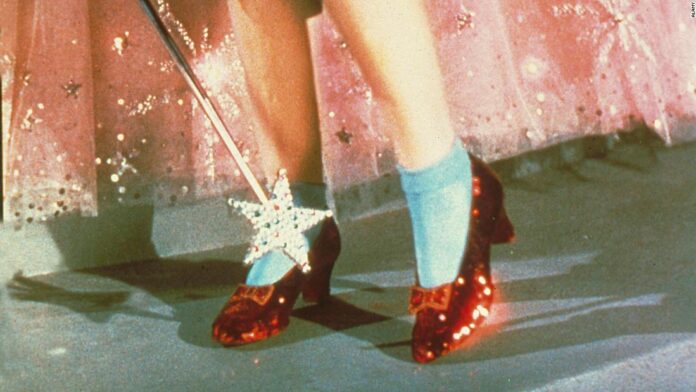What would “Lord of the Rings” be if the One Ring had by no means been crafted in the fires of Mount Doom? How would Tom Hanks have fared on the distant island in “Castaway” without his ever-silent however unflinchingly loyal volleyball companion, Wilson?
A single object can steer a movie’s total narrative arc — and, relying on the place it finally ends up after filming wraps, its folklore can prolong far past the large display screen. Famous items of movie historical past can promote for tens of millions of {dollars}, like Robby the Robot from 1956’s “Forbidden Planet,” which fetched almost $5.4 million in 2017, or Marilyn Monroe’s white halter dress from “The Seven Year Itch,” which bought for $4.6 million in 2011. Others, nonetheless, have wound up in much less glamorous locations — the blue gingham frock was worn by Judy Garland in “The Wizard of Oz” was not too long ago discovered stashed in a trash bag, whereas Bruce the Shark from “Jaws” spent a few years in a California junkyard.
But now, Bruce — who was rescued and restored — is amongst a bunch of iconic movie props and costumes occurring show at LA’s new Academy Museum of Motion Pictures, which opens this September following years of delays.
Here are eight of the museum’s most prized objects, chosen with the assist of its collections curator, Nathalie Morris.
“Some (items) are legendary in cinema history,” she stated in a video interview. “And a few other pieces may be a bit more unusual, but (they) illustrate interesting aspects of film techniques and technology.”
Alien head, “Alien”

When director Ridley Scott got down to create the xenomorph baddie in “Alien,” a slimy black endoparasitoid that loves dramatic rib-busting entrances, he did not need Sigourney Weaver’s 7-foot-tall nemesis to look “like a man in a suit,” Morris stated.So Scott tapped Swiss “biomechanical” artist H.R. Giger and particular results artist Carlo Rambaldi to make one of the scariest extraterrestrials on the silver display screen. “(Scott) really wanted something that was nightmarish and primordial and visceral, and H.R. Giger has pieces that really did the job,” Morris added.
There have been a number of totally different variations of the alien head, together with a number of mechanized ones used for close-ups (like the dripping jaws that exposed a monstrous Pez-dispenser-like inside jaw). But it is the one worn by 6-foot-10-inch artist and actor Bolaji Badejo in the authentic movie that is happening show at the Academy Museum this fall.
Ruby slippers, “The Wizard of Oz”
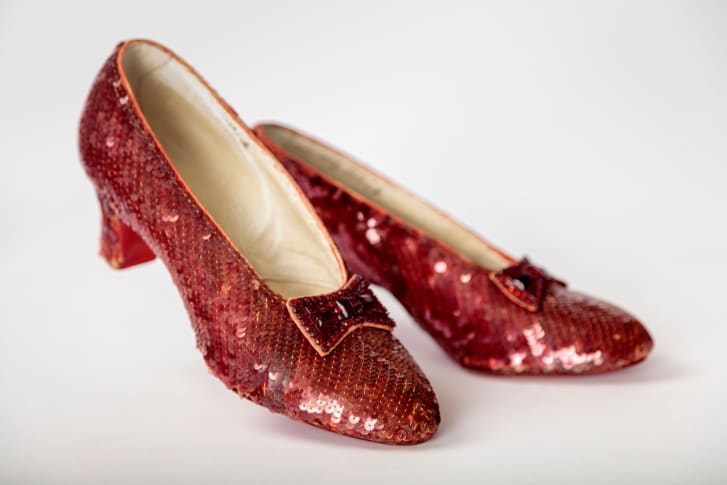
No one is aware of what number of pairs of ruby slippers have been worn by Judy Garland throughout filming for the traditional 1939 fantasy “The Wizard of Oz.” But the ones we do learn about have had fairly an experience. One pair was bought at public sale for $666,000 in 2000 and one other was recovered by the FBI in 2018 after being stolen from the Judy Garland Museum in Minnesota 13 years earlier.
“What we know is there are four pairs that definitely survived,” Morris stated. “But there were at least seven pairs made — ours is labeled number seven.”
The heel-clicking magic of the sequined, low-heeled footwear has captured youngsters’s imaginations for generations.
“It’s such a well-loved film, and it’s really become very much part of American folklore and history,” stated Morris. “The ruby slippers bring all of that magic together into an object.”
Bruce the Shark, “Jaws”

Bruce the Shark, the formidable Great White from “Jaws,” stays “one of the great screen villains of all time,” stated Morris.
The model discovered at the Academy Museum is one of 4 produced for the movie, all from a single solid. The first three did not survive filming, however this Bruce did — maybe as a result of he by no means made an on-screen look. Instead, he was placed on show at Universal Studios as a customer attraction earlier than winding up in a junkyard.
After the mannequin was donated to its collection in 2016, the Academy Museum undertook “a big restoration project” to return it to its former glory, stated Morris, including: “He had to be stripped back and repainted and he had his teeth replaced.”
At 25 ft lengthy, that is the largest piece of memorabilia in the museum’s collection. “You don’t necessarily think about him as an object,” Morris stated. “You think about him as a character.”
Frida Kahlo costume, “Frida”
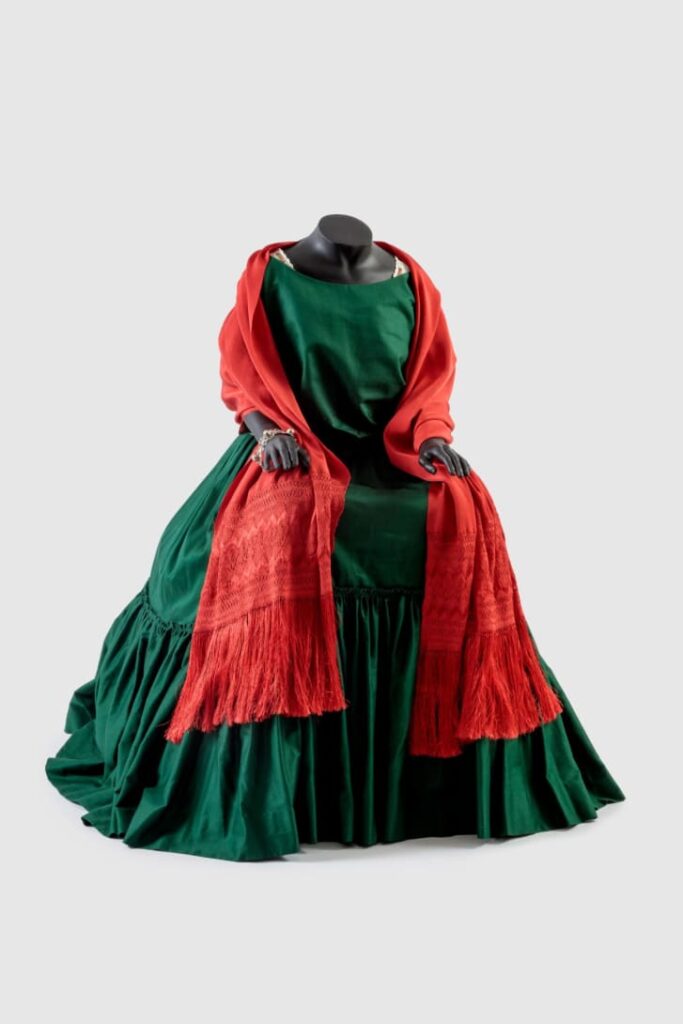
Salma Hayek earned an Oscar nomination for her portrayal of Mexican artist Frida Kahlo in the 2002 biopic “Frida” — and so, too, did costume designer Julie Weiss.
Her reimagination of the painter’s inexperienced costume, with a crimson rebozo scarf, is amongst the many costumes occurring show at the Academy Museum. The garment was primarily based on one worn in a marriage portrait that Kahlo painted of her and artist Diego Rivera, whom she married greater than as soon as in her lifetime.
Director Julie Taymor “wanted to infuse Frida Kahlo’s paintings into the narrative structure of the film,” Morris stated, including that the inexperienced costume “became such an important part of her look.”
C-3PO and R2-D2, “Star Wars”

Beloved droid duo C-3PO and R2-D2 have amused “Star Wars” followers with their pithy banter since the franchise debuted in 1977. In each the authentic and prequel trilogies, R2-D2 was performed by British actor Kenny Baker in a droid go well with. But a mechanized model was additionally used, Morris stated,
“The head could rotate. And he (R2-D2) could emote, to the extent that a droid can emote,” she stated, including that the Academy Museum’s mannequin is a mortgage from the Lucas Museum of Narrative Art, which opens in 2023.
Meanwhile, actor Anthony Daniels’ authentic gold C-3PO costume in “A New Hope” received blazingly scorching in the desert places used for the fictional planet Tatooine, in accordance with Morris.
“He obviously was very uncomfortable in the desert,” she stated. “He had to keep reminding people that he was actually an actor inside that costume, and he needed attention between tapes. And because the mouth hole was so small, it was very difficult for him to speak clearly … There were lots of tweaks made subsequently to make it more comfortable.”
The C-3PO costume on show at the Academy Museum is an up to date model that first appeared in 1980’s “The Empire Strikes Back.”
Rosebud sled, “Citizen Kane”
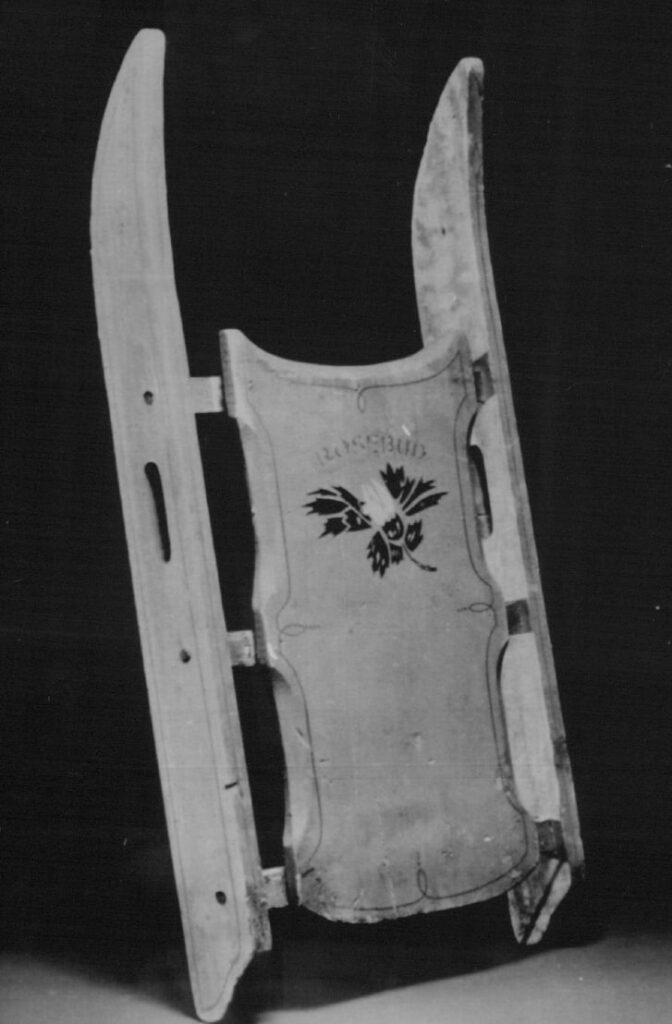
The 1941 drama “Citizen Kane,” starring and directed by Orson Welles, is commonly hailed as the pinnacle of filmmaking. And the Rosebud sleigh, an emblem of the protagonist’s loss of innocence, is “a holy grail of cinema history,” stated Morris. “It’s the object that drives the mystery and plot.”
Four variations of the sled have been made: a pinewood one which seems early on (and was later bought at public sale for $233,500) and three balsa wooden copies for the movie’s fiery conclusion.
“Orson Welles didn’t like the first take, but he loved the second,” Morris defined. “So the third sled that was made, survived.”It wound up in the workplace of none apart from Steven Spielberg, who paid $60,500 for it at a 1982 public sale, and has now loaned it to the Academy Museum. Shortly after the public sale, the Washington Post reported that the Rosebud sled had handed by way of a number of arms previous to the sale, having almost met its demise in a trash heap outdoors the movie studio’s prop vault.
Life masks of Grace Kelly, Unknown
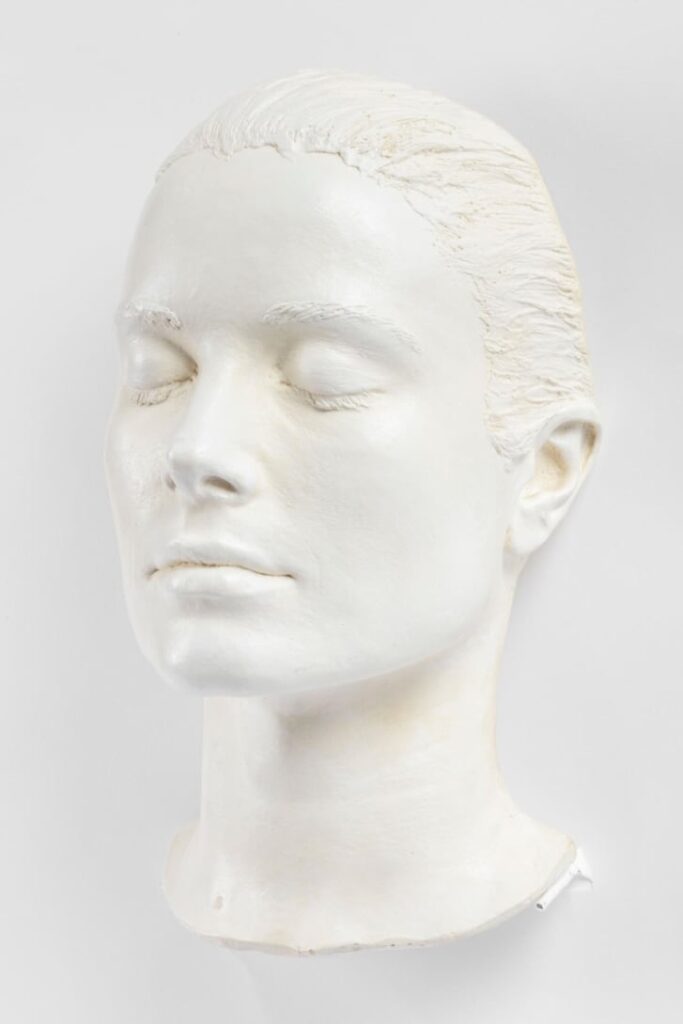
Grace Kelly had a quick however iconic Hollywood profession, together with starring roles in Alfred Hitchcock classics like “Rear Window” and “Dial M for Murder.” A “life mask” of the actress, used to check hair and make-up, is a component of the Academy Museum’s collection, although it is not identified which movie the masks is from.
“We haven’t actually been able to attribute it to a film,” Morris stated. “I thought this was an interesting piece because it illustrates the work of the makeup artist and the actor — and their interaction … It’s almost like a beautiful piece of sculpture.”
Life masks could be solid repeatedly, which means that the collector’s market is flooded with them. (On Etsy, allegedly genuine life casts of Kelly — in addition to celebrities together with Jack Nicholson and David Bowie — could be purchased for underneath $150). Life casts of Clark Gable, Mel Brooks and Don Cheadle are amongst these on show at the Academy Museum.
Dinosaur Input Device (DID), “Jurassic Park”
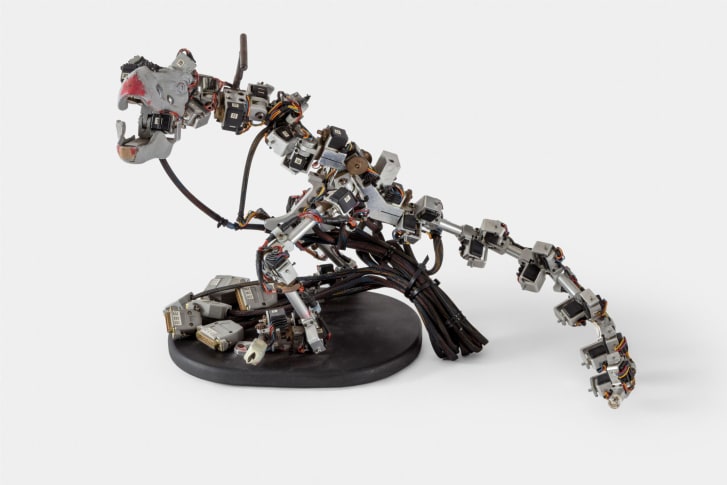
When Spielberg first envisaged 1993’s “Jurassic Park,” he wished a complete solid of big animatronic dinosaurs. But the price would have been exorbitant, so the director as an alternative settled on a combination of animatronics and stop-motion expertise. Creating herds’ value of plausible dinosaurs was nonetheless a problem, nonetheless.
Enter the Dinosaur Input Device, or Digital Input Device (DID), a chunk of cinema tech designed to make lifelike dinosaurs on finance. The first was a metallic Tyrannosaurus Rex armature decked out with sensors, which stop-motion animators might place as wanted. Data from the DID was then fed into a graphics software program that animators used to construct out the creature’s type, options and pores, and skin textures. It was so profitable that one other T. Rex and two velociraptors were adopted.
“It’s a very important piece of cinema technology,” stated Morris. “It represents a bridge between traditional stop-motion animation and digital effects.”






